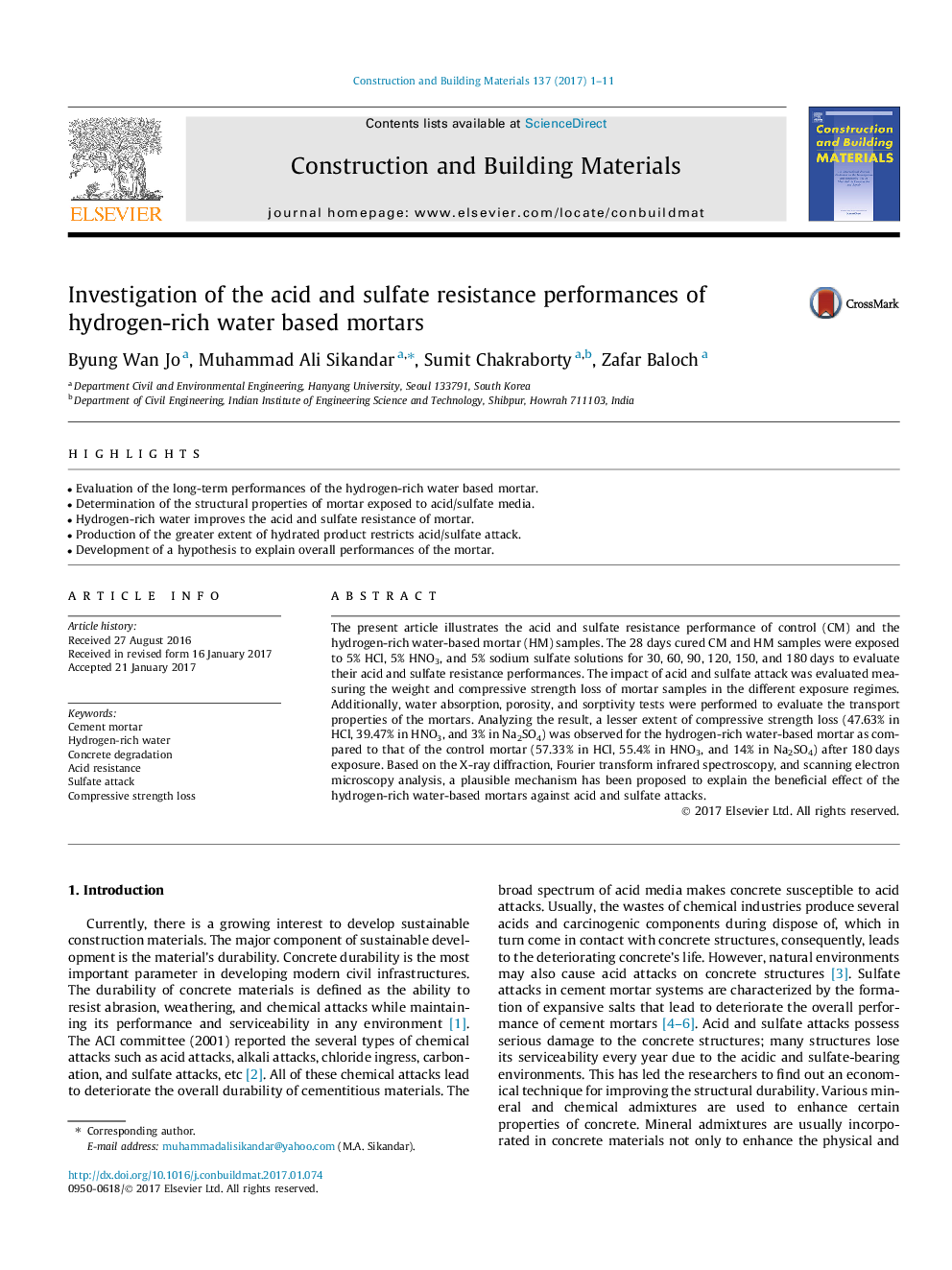| Article ID | Journal | Published Year | Pages | File Type |
|---|---|---|---|---|
| 4913420 | Construction and Building Materials | 2017 | 11 Pages |
Abstract
The present article illustrates the acid and sulfate resistance performance of control (CM) and the hydrogen-rich water-based mortar (HM) samples. The 28Â days cured CM and HM samples were exposed to 5% HCl, 5% HNO3, and 5% sodium sulfate solutions for 30, 60, 90, 120, 150, and 180Â days to evaluate their acid and sulfate resistance performances. The impact of acid and sulfate attack was evaluated measuring the weight and compressive strength loss of mortar samples in the different exposure regimes. Additionally, water absorption, porosity, and sorptivity tests were performed to evaluate the transport properties of the mortars. Analyzing the result, a lesser extent of compressive strength loss (47.63% in HCl, 39.47% in HNO3, and 3% in Na2SO4) was observed for the hydrogen-rich water-based mortar as compared to that of the control mortar (57.33% in HCl, 55.4% in HNO3, and 14% in Na2SO4) after 180Â days exposure. Based on the X-ray diffraction, Fourier transform infrared spectroscopy, and scanning electron microscopy analysis, a plausible mechanism has been proposed to explain the beneficial effect of the hydrogen-rich water-based mortars against acid and sulfate attacks.
Related Topics
Physical Sciences and Engineering
Engineering
Civil and Structural Engineering
Authors
Byung Wan Jo, Muhammad Ali Sikandar, Sumit Chakraborty, Zafar Baloch,
